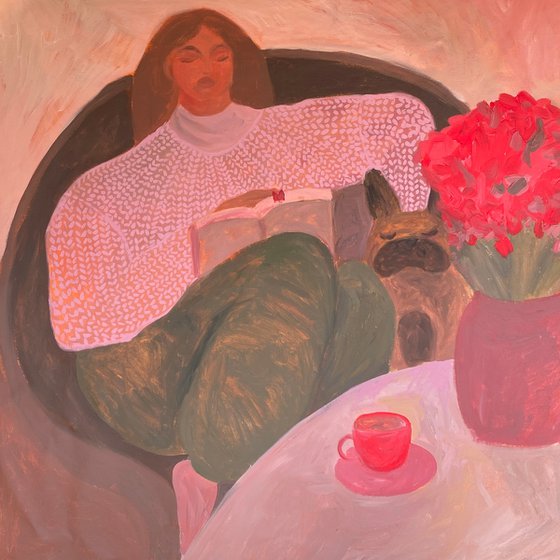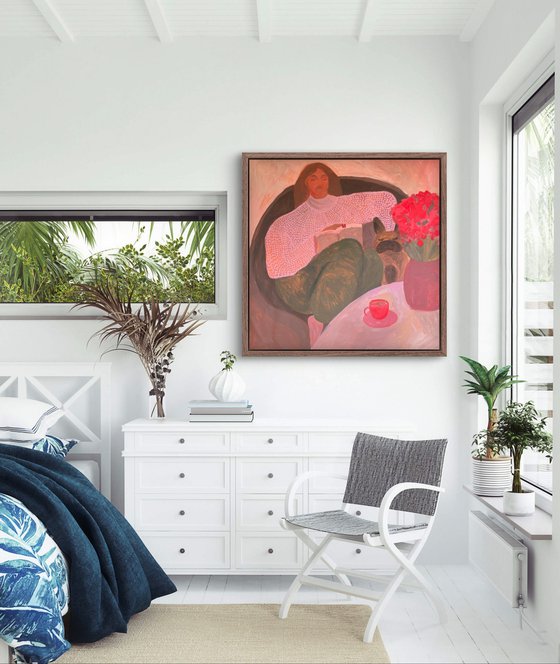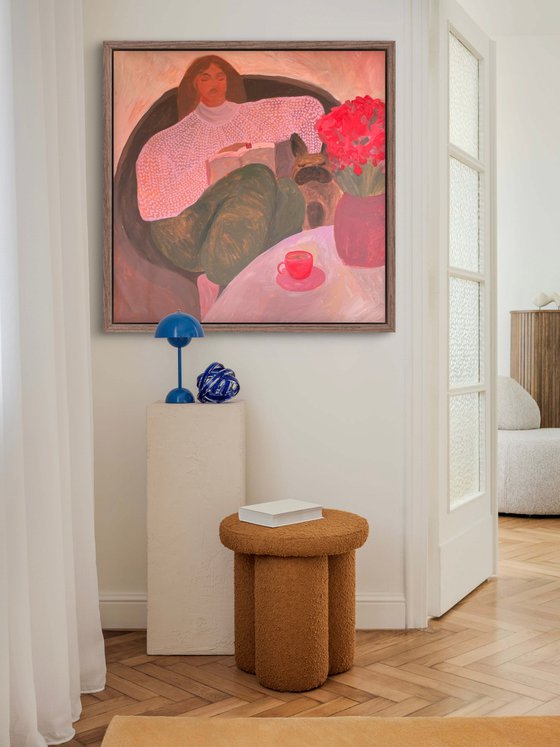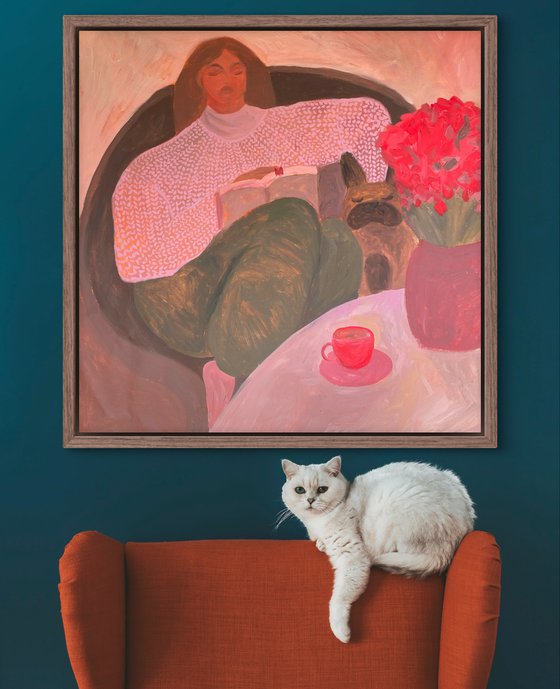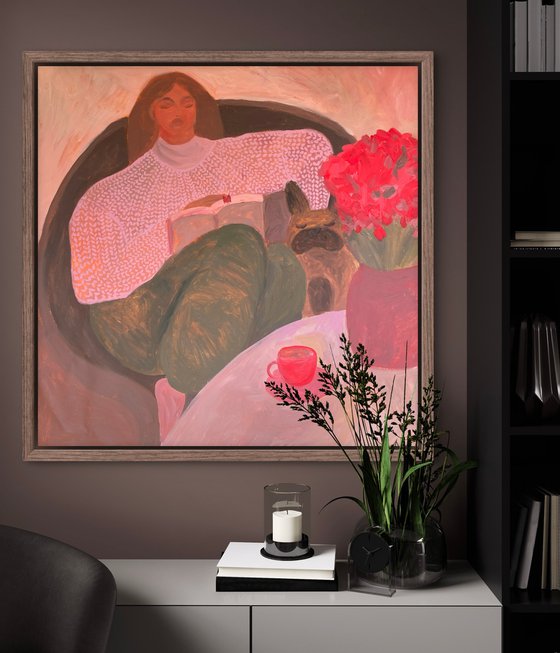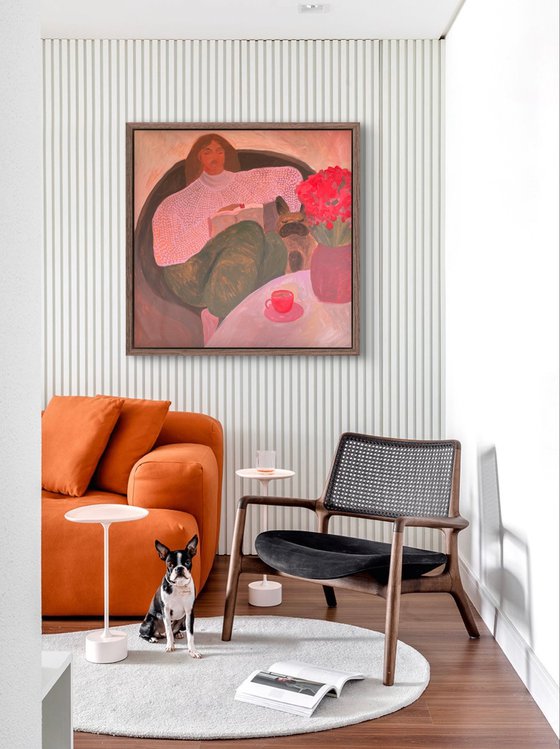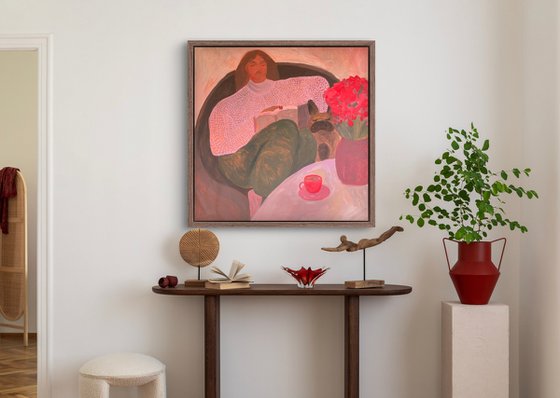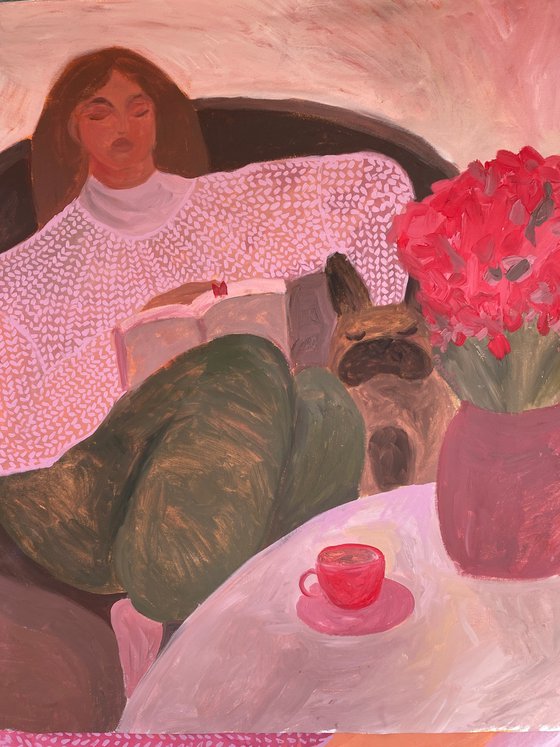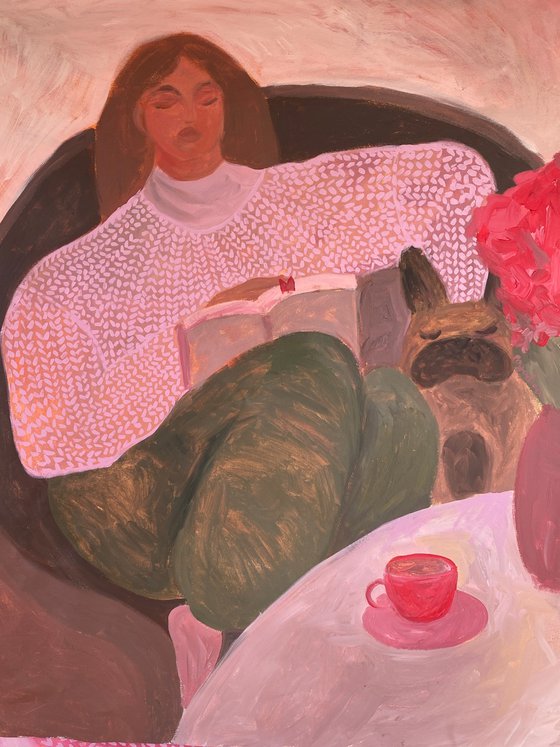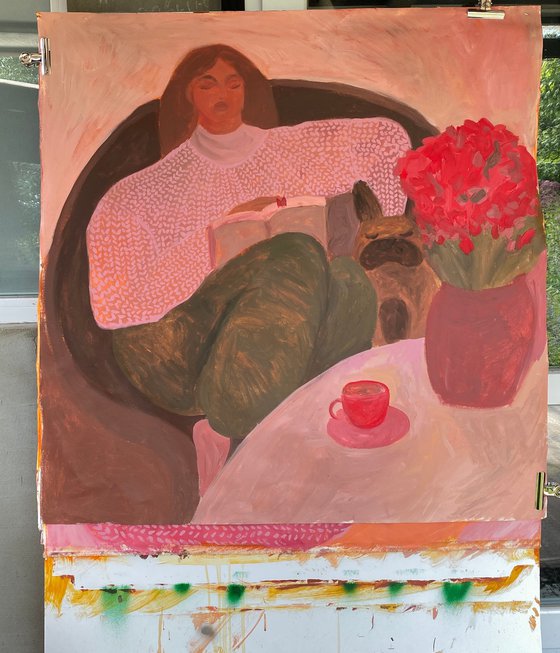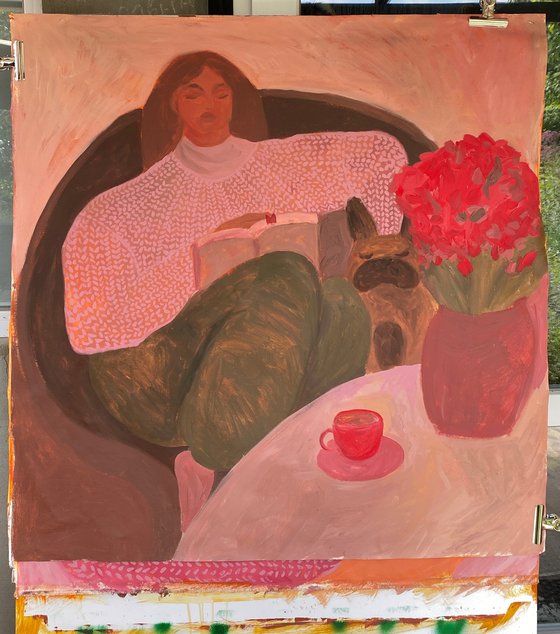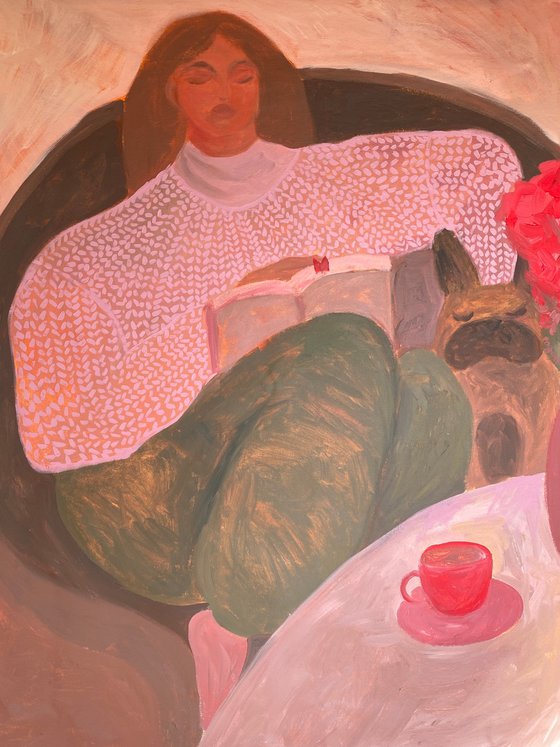Main Navigation
Original artwork description:
This painting will come to you stretched on a wooden stretcher and completely ready to be placed in the interior.
ABOUT THE ARTWORK
The painting "The Time of My Life Belongs to Me" from the MADELEINE series is a declaration of one’s right to personal space, rhythm, and inner stillness. It captures a moment in which a person reclaims control over time—not the external, social, or imposed kind, but time that is intimate, filled with presence.
In this work, ordinary things—a book, tea, a dog, the warmth of light—become more than just symbols of comfort; they are emotional anchors embedded in the body of memory. Here, the essence of involuntary memory is revealed: what seems like a small detail actually preserves vital states—calm, wholeness, the feeling of "I am."
The painting conveys a return to self, a time when external demands no longer dictate the pace of life. It is about affirming boundaries while simultaneously cultivating an internal garden where one can breathe freely. The depicted stillness is not idleness; it is an active, conscious presence in one's own life, in one's own time.
"The Time of My Life Belongs to Me" speaks to a woman’s right to subjective time, to silence without justification, to joy not tied to productivity. It is an image of resilience discovered in the everyday—a resilience that needs no defense, because it is rooted in the body, in memory, and in choice.
Madeleine series
In the Madeleine series, Daria Pogodina turns to the phenomenon of involuntary memory, known in psychology and culture as the “Proust effect.” The artist explores how ordinary objects and sensory impressions from the past are transformed into emotional anchors—inner pillars of the self.
The objects and images chosen by the author—such as a mother’s sweater, childhood food, or the voice of a television announcer—become points of access to the unconscious resources of the psyche, places of comfort and stabilization. Without falling into nostalgic idealization, Pogodina captures the subtle mechanism of interaction between the conscious and the unconscious, where the mundane becomes sacred, and seemingly banal details acquire profound meaning.
These works are not about escaping the present into the past, but about seeking inner light and strength in both personal and collective experience—a testament to the human ability to find resilience in the everyday during times of crisis.
Materials used:
Acrylic
Tags:
#figurative #girl #woman artworkThe time of my life (2025) Acrylic painting
by Dasha Pogodina
7 Artist Reviews
£958.61 Sold
- Acrylic painting on Canvas
- One of a kind artwork
- Size: 94 x 94 x 2cm (unframed) / 94 x 94cm (actual image size)
- Ready to hang
- Signed on the front
- Style: Impressionistic
- Subject: People and portraits
Do you like this artwork?
This artwork has sold, but the artist is accepting commission requests. Commissioning an artwork is easy and you get a perfectly personalised piece.
Loading
Original artwork description
This painting will come to you stretched on a wooden stretcher and completely ready to be placed in the interior.
ABOUT THE ARTWORK
The painting "The Time of My Life Belongs to Me" from the MADELEINE series is a declaration of one’s right to personal space, rhythm, and inner stillness. It captures a moment in which a person reclaims control over time—not the external, social, or imposed kind, but time that is intimate, filled with presence.
In this work, ordinary things—a book, tea, a dog, the warmth of light—become more than just symbols of comfort; they are emotional anchors embedded in the body of memory. Here, the essence of involuntary memory is revealed: what seems like a small detail actually preserves vital states—calm, wholeness, the feeling of "I am."
The painting conveys a return to self, a time when external demands no longer dictate the pace of life. It is about affirming boundaries while simultaneously cultivating an internal garden where one can breathe freely. The depicted stillness is not idleness; it is an active, conscious presence in one's own life, in one's own time.
"The Time of My Life Belongs to Me" speaks to a woman’s right to subjective time, to silence without justification, to joy not tied to productivity. It is an image of resilience discovered in the everyday—a resilience that needs no defense, because it is rooted in the body, in memory, and in choice.
Madeleine series
In the Madeleine series, Daria Pogodina turns to the phenomenon of involuntary memory, known in psychology and culture as the “Proust effect.” The artist explores how ordinary objects and sensory impressions from the past are transformed into emotional anchors—inner pillars of the self.
The objects and images chosen by the author—such as a mother’s sweater, childhood food, or the voice of a television announcer—become points of access to the unconscious resources of the psyche, places of comfort and stabilization. Without falling into nostalgic idealization, Pogodina captures the subtle mechanism of interaction between the conscious and the unconscious, where the mundane becomes sacred, and seemingly banal details acquire profound meaning.
These works are not about escaping the present into the past, but about seeking inner light and strength in both personal and collective experience—a testament to the human ability to find resilience in the everyday during times of crisis.
Materials used:
Acrylic
Tags:
#figurative #girl #woman artwork14 day money back guaranteeLearn more
